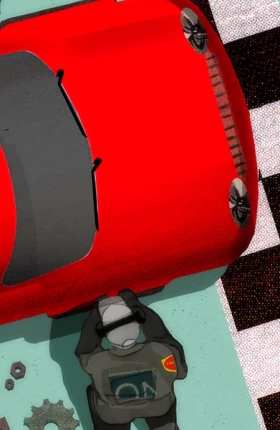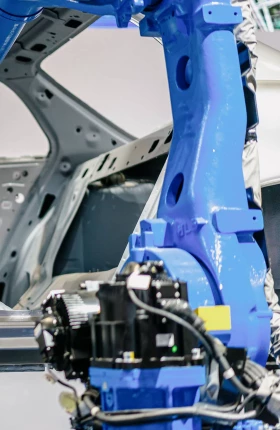Recessions—and the ensuing period of low growth—affect all companies. But it falls to a company’s leaders to define not only how well the company gets through a difficult environment but also how its competitive position can be improved for the future.
History shows that structural shifts in the pecking orders of industries occur more often in difficult times—and these shifts endure for a long time. So the fight to sustain company performance during a downturn is not just about short-term survival—it is also about longterm positioning in the industry hierarchy. This is clearly a battle worth fighting.
If we want to learn about how companies can thrive in the damaged economy that follows a massive economic crisis, there is no better place to look than the Great Depression. The 1930s was a period of enormous disruption. The upheavals created new economic realities and shook up whole industries. Even in the worst of times, though, some well-run companies not only survived the crisis in good shape but also thrived in its aftermath.
Many companies that outperformed their peers in the Great Depression continued to do so for many years afterward—and by a substantial degree. There is no more dramatic an example than the U.S. automobile industry , with General Motors (GM) and Chrysler building the foundations for four decades of future success. In chapters 4 and 5 of our book Accelerating Out of the Great Recession: How to Win in a Slow-Growth Economy , we offer a detailed description of the defensive and offensive strategies that underpinned the success of high performers during past downturns. To set the scene, though, let us look at what happened to U.S. automobile manufacturing during the Great Depression.
Like today, the automotive industry was among the most adversely affected in the crisis. From 1929 to 1932, sales of new automobiles fell by 75 percent—and automobile companies had a combined loss of $191 million in 1932 ($2.9 billion in today’s money), or 25 percent of industry sales. This compared with profits of $413 million in 1929, or 14 percent of industry sales. The highly profitable luxury end of the market virtually disappeared. The lower-priced segment grew from 40 percent of sales in 1929 to 80 percent of sales in 1933 and remained at 60 percent through the upturn and beyond. As a result, half the automakers closed down.
Although it may seem ironic to look to the U.S. automobile industry for examples of how to thrive in a damaged economy—given its performance during the Great Recession—the truth is that the performance of Chrysler and GM during the 1930s stands out. GM delivered a profit in every year of the Great Depression, and Chrysler incurred a loss in only one year.
Prior to the Great Depression, the automobile market had been split three ways. GM and Ford Motor Company each enjoyed a one-third market share. Several smaller companies shared the final third. GM and Chrysler grew their market shares by a staggering 15 and 19 percentage points, respectively. In contrast, inaction combined with some poor choices significantly hurt Ford’s position and permanently damaged the smaller competitors.
What differentiated GM and Chrysler from their competition was their superior understanding of how to adjust to the new realities presented by the Great Depression and their ability to look for advantage. In other words, they employed the strategic basics of both defense and offense.
General Motors: A Quick, Decisive, and Comprehensive Response
It is not that GM anticipated the Great Depression better than any of its competitors. According to Alfred P. Sloan, president and later chairman of GM from 1923 to 1956, “It would be unfair to claim any particular prescience on our part; no more than anyone else did we see the depression coming.... [W]e simply learned how to react quickly. This was perhaps the greatest payoff of our system of financial and operating
That system enabled GM to quickly mount a defense to the changing economic conditions in the 1930s. The company acted decisively to cut costs: mothballing plants, laying off workers, rapidly scaling back production in its middle-market and high-end brands, and reducing the breakeven point on its lower-end Chevrolet brand by a third. To reduce inventories, GM aggressively cut prices by as much as 70 percent on its expensive cars—a move that would have been unthinkable under any other circumstances. Because GM had limited backward integration (ownership of suppliers), it was able to keep fixed costs low and transfer some volume risk to suppliers, enabling GM to scale down production quickly when demand collapsed. The company used the same engine and parts across different brands to further reduce inventories and create flexible capacity. And it merged its sales forces across middlemarket brands to make the sales force more effective and better use sales capacity.
At the heart of GM’s success during the Great Depression was its decision to realign its product offering to fit the needs of a consumer base with less money to spend—creating “a car for every purse and purpose,” as Sloan put it. GM expanded aggressively into the lowpriced car market by shifting production from high-end brands to Chevrolet, its high-volume discount brand. GM spent more on advertising for Chevrolet and offered financing as a way to create an attractive package for customers at a time when banks were not lending. As a result, GM gained share and commanded a higher price than Ford could for comparable products.
Chrysler: Making the Big Three
The Chrysler story shows how a decisive attack strategy can work even in the toughest of times. For Chrysler, the Great Depression was a game-changing period during which it rose from startup status to one of the “Big Three” U.S. automakers. Founded in 1925, Chrysler had merged with Dodge, a much larger company, in 1928. Although the merger improved its scale, Chrysler still had just an 8 percent share of the market when the Great Depression hit.
Like GM, Chrysler had chosen to undertake little backward integration, giving it more flexibility than most of its rivals and allowing it to cut costs rapidly when the Great Depression hit. Chrysler also executed the sort of basic measures that companies still follow today: as sales declined in 1930, it closed plants, laid off workers, and reduced administrative expenses by nearly one-third that year.
Driving down costs, even in a crisis, is not easy. Indeed, executives often plead that their (or their department’s) needs are special in order to get approval for a budget increase. This is exactly what happened at Chrysler, and Walter Chrysler had to take a creative approach—as the following story illustrates—to get his senior managers to accept the seriousness of the company’s situation and to make realistic budget proposals.
Walter P. Chrysler met with his chief lieutenants in early 1930 and insisted that they reduce costs in their departments by 30 percent. Most of his executives, however, proposed spending increases instead. Engineering wanted budget increases to develop new products, the sales department argued that it needed additional resources, and K.T. Keller [president of the Dodge Division of Chrysler] pleaded for funds to upgrade machinery and equipment. Annoyed by their responses, Chrysler asked B.E. Hutchison, the treasurer, to bring him the company payroll book, which listed all of Chrysler’s employees. Walter Chrysler then proposed, in a half-serious way, that they lay off everyone in the last one third of the book. His lieutenants returned the next day with concrete proposals for the reductions Chrysler had
What truly differentiated Chrysler, however, was its focus on improving efficiency—which would be a competitive advantage under any circumstances. Attempting to compensate for its scale disadvantage in relation to the “Big Two,” Chrysler increased its production efficiency by 50 percent. The assembly lines for Chrysler’s Plymouth brand reached production levels of 90 cars per hour in comparison with 60 cars per hour at both GM and Ford, which enabled Plymouth to realize the highest profit per unit of any discount auto brand at the time. Although Plymouth had half the sales volume of Chevrolet, it generated 70 percent more profit per unit.
In addition to managing costs effectively, Chrysler also made vital moves to support the top line. Understanding that sales in a severe recession were more likely to come from a budget vehicle, Chrysler had the courage to open new dealerships and expand its advertising and marketing support (thanks to lower advertising rates) for Plymouth, its discount brand. As sales of more expensive brands plummeted, Plymouth sales surged.
Even while it successfully coped with the Great Depression, Chrysler kept its eye on the long term. Chrysler saw that the nationwide highway-expansion program, undertaken as part of the New Deal, would create a demand for faster, more powerful cars. Accordingly, the carmaker continued to invest in research and development during the tough times. It was the first manufacturer to use wind-tunnel testing as part of a design and engineering process that produced more aerodynamically efficient cars. Chrysler’s Airflow design and semi-unit-body construction innovations quickly became the industry standard.
Chrysler was managed by a powerful leader. But Walter Chrysler had also built a strong team around him. And it was this bench strength that allowed the company to advance so effectively on so many fronts.
Ford: Hurt By High Costs and Inflexibility
As the automobile company that had pioneered high volume and low prices, Ford should have been well positioned for the Great Depression. However, its indecisiveness and inflexibility resulted in declining sales and a 12 percentage point loss in market share. Ford moved from being a contender for market leader to a weak third place. As the most vertically integrated company in the industry, Ford bore the full financial impact of the decline in sales because of its high fixed production costs. Ford’s lax accounting and poor business management made cutting costs difficult. In fact, since it was unable to control costs, Ford tried to increase its prices in the midst of the Great Depression.
Ford also fell afoul of a new reality of the Great Depression—one that shows signs of returning today. Unlike GM, which purchased foreign automobile manufacturers so that it could produce entire cars in the country of sale, Ford manufactured parts in the United States and then shipped them overseas to be assembled. This practice made Ford vulnerable to the rise in protectionism. Ford was hit with tariffs of nearly 100 percent on certain parts.
To add to its difficulties, Ford—caught short by Chevrolet’s introduction of a V6 engine in 1928—found itself behind the innovation curve at the start of the Great Depression. In an attempt to catch up, Ford rushed a new V8 model to market in 1932. However, the new model was poorly positioned for the value-conscious Great Depression market—it was both more expensive and less reliable than its competitors.
Ford survived the Great Depression, of course, but not without scars. It took years for the company to recover some of the share loss that it suffered in those turbulent years.
The Rest of the Market: Also-Rans
Virtually all the smaller companies competed in the expensive or midpriced segments of the market. They were highly exposed to sharp drops in sales as demand fell away. They were slow to cut costs and introduce low-priced models. Apart from Chrysler, the small players either went out of business or lost so much market share that they could no longer compete effectively. Packard, a luxury brand, did not introduce a midpriced model until 1935.
The year 1937 saw the creation of the most unlikely combination when Nash Motors merged (presumably for misguided reasons of synergy) with Kelvinator—a refrigeration and appliance company—and created the hot-water car heater and a vacuum gear-change system. But with little market share and a substantial scale disadvantage, the company was unable to exploit its inventions. By the mid-1950s, unable to make up the ground they had lost during the Great Depression, none of the smaller brand names remained as stand-alone automobile companies.
You can purchase Accelerating Out of the Great Recession at Amazon or at Barnes & Noble .
This is an excerpt from
Accelerating Out of the Great Recession: How to Win in a Slow-Growth Economy
by David Rhodes and Daniel Stelter. Copyright © 2010, The Boston Consulting Group, Inc. Reprinted by permission of McGraw-Hill. All rights reserved.






